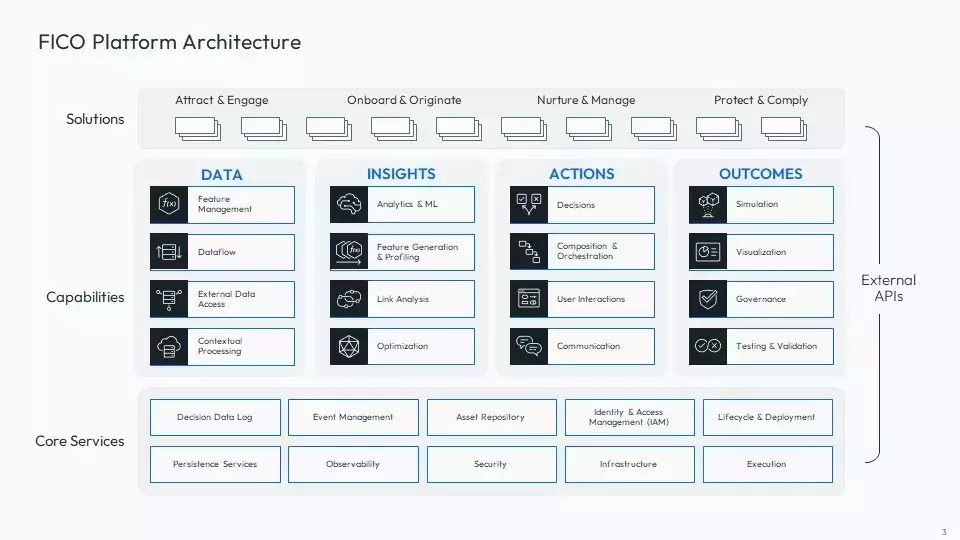Why NOW Is the Time to Restructure Technical Debt
A meshed API architecture and a composable set of capabilities can help you restructure and reduce technical debt

Businesses incur technical debt when they use outdated technology that needs to become compatible with the current technology. This type of debt can come from lack of maintenance on existing systems or from not investing in new technologies to keep up with innovation and standards. This post will cover the top 5 symptoms and challenges caused by technical debt, how to restructure it, and why stakeholders are concluding now is the time.
Introduction to Technical Debt
Technical debt is a metaphor used to describe the costs associated with quick-and-dirty software solutions. Debt refers to something that has been borrowed, must be paid back, and accrues interest over time if it remains unpaid.
In a similar way, technical debt accumulates in code due to shortcuts taken during software development projects or design decisions made without considering all their implications. This debt can result in delayed projects, deteriorating product quality, and difficult maintenance processes down the line - making it essential for development teams to identify and restructure this debt as soon as possible.
Identifying Technical Debt
The first step in managing technical debt is identifying what areas of the codebase are in need of restructuring. This can be done by:
- Analyzing the codebase to understand how various components interact with each other and whether there is need to refactor any of the codebase.
- Auditing the architecture to identify areas where your systems may be vulnerable and determine what improvements need to be made
- Examining the project management process to decide which tasks should take priority when restructuring tech debt and how best utilize resources for optimal results
Technical debt may be out of balance at an organization when two or more of the following symptoms are present:
- Reduced Productivity: Technical debt can lead to slower software development times, decreased employee productivity and difficulty adapting quickly to market changes.
- Increased Risk of System Failure: Outdated systems increase the risk of system failure or security breaches due to lack of maintenance or support.
- Unclear Priorities & Goals: Without a clear picture of technical debt, it’s hard for companies to properly prioritize objectives and set achievable goals for their business operations and projects.
- Weak Scalability Potential: Companies with large amounts of technical debt will often struggle in terms of scalability potential as they attempt to maintain legacy systems alongside new technologies that would enable them to move forward from their current situation efficiently and cost-effectively.
- High Maintenance Costs: Maintaining systems with technical debt attached is expensive. Over time, technical debt maintenance costs add up significantly, resulting in businesses being unable to afford necessary upgrades or technological investments needed for growth and innovation.
Restructuring Technical Debt
Once all areas of code debt have been identified, it's time to start restructuring them! Restructuring technical debt is similar in many ways to restructuring financial debt. The goal of both is to make it easier for the parties involved to pay off their respective debts. When it comes to technical debt, this might involve re-architecting code or refactoring components so that they are more efficient and maintainable. Similarly, financial debt restructuring might involve negotiating payment plans or reducing interest rates. Both types of debt may be considered an investment as the added complexity of repaying the debt can be offset by the payoff of improved efficiency, easier maintenance, and increased mobility.
It may be necessary to refactor codebase to make sure that the code is as organized and efficient as possible. This includes ensuring that coding conventions are followed, consistent naming conventions are applied, and that any redundant or bad code is removed. Re-architecting the application involves redesigning existing systems to make sure they're secure, robust, and scalable. After priorities have been established, project management can change task priorities to ensure that code debt tasks can be completed within a desired time frame.
Benefits of Restructuring Technical Debt with Meshed API Architecture
Meshed API architecture offers several advantages when it comes to restructuring technical debt. An easy way to think of how meshed API architecture works is to imagine a symphony: each instrument is its own API and the conductor provides the meshing. The conductor (meshed architecture) orchestrates the timing between the instruments (APIs) to ensure that all components are working together in harmony from a single sheet of music (the user experience). We could go on to say that a verse is a development user story, a meter is a microservice, and notes are data but, I digress… In the same way, an API architecture is made up of different parts of information systems that all work together to make sure everything runs smoothly.
The modular nature of the architecture allows software developers to identify and manage dependencies between various components of their applications, helping them to quickly address any issues that arise more easily. Additionally, because Meshed API architectures are designed with scalability in mind, they can help development teams more easily expand their applications to accommodate changing business needs.
The use of modern API standards also helps streamline the process of restructuring technical debt, as development teams can rely on established conventions for certain types of operations. This reduces the amount of time and effort required when making changes to existing code, allowing software developers to more quickly address any areas that need improvement.
Finally, because meshed API architectures are designed with resilience and security in mind, they can help ensure that any technical debt restructuring done is robust and reliable. In today's economy the enterprise is stressed to handle increasingly complex business decisions that require information, tribal knowledge, and analytics to determine each next best action to reach desired outcomes.
Restructuring Technical Debt with Composable Solutions
At FICO we are addressing these challenges with composable applications that help businesses apply and execute on the collective intelligence of business experts, data scientists, and IT professionals.
FICO Platform is a modular set of applied intelligence capabilities that can be folded into a meshed API architecture offering precision tools for reducing technical debt. Applied Intelligence involves automating complex tasks and processes to reduce the time and effort needed to complete work, while a meshed API architecture allows organizations to streamline integration of disparate applications and systems. When combined, these two approaches can help businesses avoid costly rework, improve execution speed, and reduce the overall burden of technical debt.

Composability in a platform allows non-technical stakeholders to take an active role in DevOps by having low-code and no-code creative authoring experiences. Developing new features on a platform allows assets to be reusable by other product teams. This kind of collaboration between team members further reduces time-to-market with each new user story created and deployed on the platform. For more about the benefits of composability, refer to my previous post, "The Composable Enterprise: Trends & Benefits from Composability."
Conclusion
As the economy slows, restructuring technical debt is a top strategic priority to preparing for the next upturn. Before incurring another debt note for the quick-and-dirty solution to the most current and pressing business problem, consider starting there on a platform strategy. Introduce a standards-based, modular approach to innovation that can scale in usability, size, complexity, and observability to retire debt while feeding the business now and setting the table for big gains in the long run.
Find out more about how FICO Platform customers are winning by reaping all the benefits of restructuring technical debt, innovating at scale, and reducing IT burden – all in one swing.
How FICO Platform Helps You Build Intelligent Applications and Reduce Technical Debt
- Explore FICO Platform
- See why Forrester ranked FICO as a leader in digital decisioning systems
- Watch FICO Chief Product & Technology Officer Bill Waid discuss Applied Intelligence and FICO Platform
Popular Posts

Business and IT Alignment is Critical to Your AI Success
These are the five pillars that can unite business and IT goals and convert artificial intelligence into measurable value — fast
Read more
It’s 2021. Do You Know What Your AI Is Doing?
New "State of Responsible AI" report from Corinium and FICO finds that most companies don’t—and are deploying artificial intelligence at significant risk
Read more
FICO® Score 10T Decisively Beats VantageScore 4.0 on Predictability
An analysis by FICO data scientists has found that FICO Score 10T significantly outperforms VantageScore 4.0 in mortgage origination predictive power.
Read moreTake the next step
Connect with FICO for answers to all your product and solution questions. Interested in becoming a business partner? Contact us to learn more. We look forward to hearing from you.
